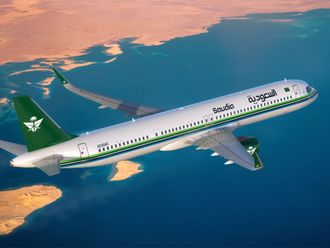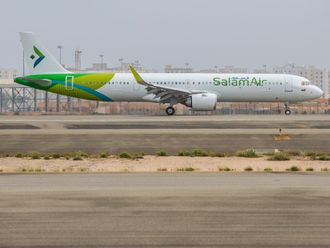Dubai: Ancillary revenue, or revenue from non-ticket sources in the airline industry, is reported to have grown to €18.23 billion last year, according to the Amadeus Review of Ancillary Revenue Results for 2011.
The report which was announced by IdeaWorksCompany, a consultancy in the area of airline ancillary revenues, and Amadeus, a travel technology partner and transaction processor for the travel and tourism industry, is based on the financial filings made by 108 airlines worldwide, 50 of which disclose ancillary revenue activity. The growth shows a 66 per cent jump in two years from the 2009 result of €10.95 billion, the report said.
Toping the list is United Continental with €4,162,655,000; Southwest made the list with €949,900,000, and the UAE’s Emirates airline slipped from 2010’s list of €426,240,000.
“As a group, these 10 airlines delivered revenue in excess of €13.7 billion, or 75 percent of the total amount disclosed by airlines for 2011. Airlines generally moved up the chart for 2011 in terms of overall ancillary revenue produced. easyJet passed Ryanair for the first time. Delta’s ancillary revenue results decreased during 2011 for a combination of reasons. The airline refined how it discloses ancillary revenue results, now excluding revenue from some aviation-related businesses,” the report said.
“The main driver for ancillary revenues is that airlines have to be more innovative in both their pricing structure and how they mitigate against labour and fuel costs,” said Saj Ahmad, chief analyst at StrategicAero Research. “The typical way that many airlines tackle this is by charging for baggage or on-board services, as well as fuel surcharges on tickets.”
However, these charges vary depending on the airline, Ahmad said. “In Europe, we’ve seen the likes of Ryanair charge for boarding passes and check in, whereas in the GCC, carriers like flydubai only charge you for what you use or carry on board. The limit of such revenue generators is driven in large part by how far an airline can push a customer to paying, otherwise they’ll simply go elsewhere. Ancillary revenue growth is not endless. Competition ensures fees are not extortionate so as not to dent demand.
For low fare airlines, almost 15 to 33 per cent of revenue is made from unique services.
For instance at Southwest, “revenues produced by EarlyBird service, which provides early boarding for a $10 fee, were $142 million (€114 million) during 2011. The Business Select product is designed to attract commercial travellers and provides a package of benefits such as priority airport screening, early boarding, and a welcome cocktail. Ancillary revenue from this initiative was $96 million (€77 million) for 2011.”
Some airlines promote a €1 fee to have a flight itinerary sent to a mobile phone, the report said.
“While growing revenue via ancillary channels is indeed vital to offset increased costs such as fuel, the reality is that such growth is short-termism. You cannot rely on it forever, especially if an airline does nothing to reduce costs elsewhere,” Ahmad said. “Some oil analysts are already forecasting an oil glut, so if prices tumble or come down, so too must those ancillary fees.”
One thing’s for sure though, people will simply fly with someone who doesn’t charge. “Elements like bag fees, catering and entertainment fees on an aeroplane will stifle demand,” he said. “Competition is such that you can’t afford to price your customers out of your hands. Loyalty rewards help, but in the grand scheme of things, customers have enough choice to know when they are paying too much and will look elsewhere for value.”











